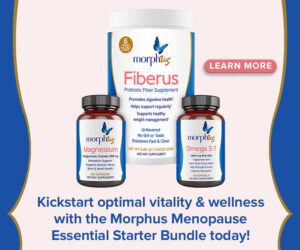
Conventional treatment for fluid buildup problems in the middle ear caused by eustachian tube dysfunction is the surgical implantation of tubes to help drain the fluid. Allergies to milk and other common foods and the frequent or indiscriminate use of prescription antibiotics are at the bottom of most cases of recurrent infections or eustachian tube dysfunction. The mechanism by which food allergies are thought to increase fluid in the ear have to do with the fact that food allergies create nasal congestion and the fluid from the back of the nose moves easily to the ear through the eustachian tube, the passageway that connects the middle ear with the nose. When there is enough congestion in the tube, it gets blocked and the fluid sits in the ear. Bacteria then start to multiply and ear pain with fever eventually occurs.
Fungal infections can occur secondary to repeated rounds of broad spectrum antibiotics. Fungi, through the production of mycotoxins may act as immunosuppressants, especially with respect to cellular immunity (i.e. the impairment of white cell defence against bacteria, viruses, parasites, etc.). This then leads to more ear infections, more antibiotic prescriptions, etc. Antibiotics wipe out the friendly microbial flora in the gut allowing candida and other bugs to multiply and this can damage the lining of the gut leading to inflammation and more serious food reactions.
The best way to break the vicious cycle is to treat the fungus, revise the diet by eliminating sugar, refined carbohydrates and the hidden food allergies. If you have been skin tested for food allergies, get more accurate testing done. Skin tests will misdiagnose food and chemical allergies in over 90% of the cases. I usually recommend people do an elimination/provocation type of test (described by Dr. William Crook in “Tracking Down Hidden Food Allergies”) combined with the ELISA/Act blood test which can check antibody levels against over 300 foods and chemicals. The top food allergies associated with recurrent infections and eustachian tube problems are cow's milk, wheat, egg whites, peanut products, soy, corn and oranges. The allergic foods should be eliminated for 6 months or longer to achieve stable results. Both the frequency of the infections and the amount of fluid in the ears should go down significantly as early as 3 weeks after the offending foods are removed from the diet.
There are also quite a few natural remedies that can be supplemented to boost immunity. Cod liver oil in liquid or capsule form is still a very popular preventive supplement. Vitamin C crystals mixed with cranberry juice has an antihistaminic, decongestant effect in higher than RDA doses. If bowel movements become too loose, reduce vitamin C to a better tolerated level. Bioflavonoids like pycnogenol and quercetin make vitamin C even more effective. Studies show that taking zinc gluconate lozenges reduces the length of recovery from the common cold from an average of 10.8 days to 3.9 days. Other immune boosters include beta carotene, vitamin B6, spirulina, chlorella and bee pollen.
A long list of herbal antibiotics can also be used either alone or in combination: echinacea, goldenseal, cat’s claw, hypericum, propolis, garlic, astragalus, burdock, slippery elm, sheep sorrel, Turkish rhubarb, capsicum, chaparral, red clover, ma huang, salix alba, sea kelp, elderberry, pau d’arco (taheebo) and calendula. The amino acid, N-acetyl-cysteine (NAC) is another natural antibiotic. It can dissolve mucous build-up anywhere in the respiratory tract and is particularly effective with sinusitis and bronchitis. Colloidal silver and licorice root are yet two more safe and effective natural antibiotics which can help the body clear many stubborn viral infections.
If you have been prescribed antibiotics, it is important to supplement with lactobacillus acidophilus. These friendly bowel bacteria which are killed off by prescriptions are important to help prevent yeast (Candida) and other infections. For a personalized program, see a natural health care practitioner.
Dr. Rona










